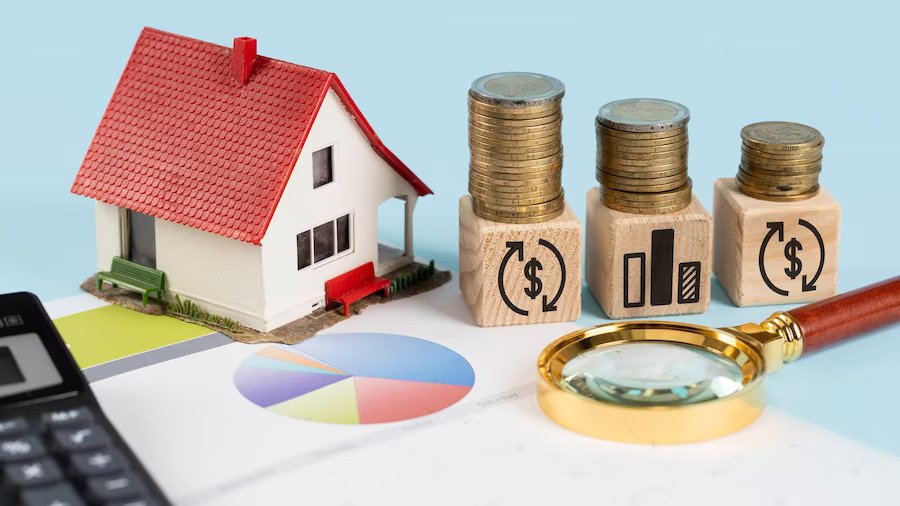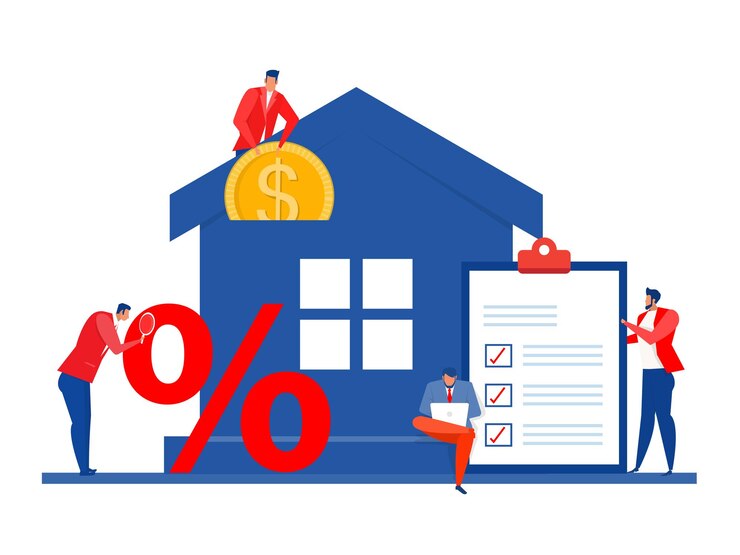Understanding The Benefits Of Utilizing A 1031 Exchange For Your Second Home And Other Investment Properties

When it comes to building a diverse and profitable investment portfolio, many investors look to utilize a 1031 exchange second home and investment properties.
A 1031 exchange is a tax-deferment strategy that allows property owners to sell an investment property or second home and reinvest the proceeds into another “like-kind” property without incurring immediate capital gains taxes. This investment strategy can offer significant benefits, including increased passive income and higher returns on investments.
In this blog, we will delve into the ins and outs of 1031 exchanges for second homes and investment properties, exploring rules, regulations, and investment property tips. By the end of this blog, you will have a better understanding of how to maximize your investment potential and diversify your income stream through 1031 exchanges.
Utilizing A 1031 Exchange For Your Second Home And Other Investment Properties
A 1031 exchange is a powerful tax-deferment tool that can be used to maximize returns and diversify investment portfolios. This strategy allows property owners to trade in one “like-kind” property for another without paying capital gains taxes on the sale of their original property.
Below is a step-by-step guide on how to utilize a 1031 exchange second home and other investment properties.
Step 1: Identify Suitable Replacement Properties
To utilize a 1031 exchange for a vacation home or investment property, you must first identify a suitable replacement property. The replacement property must be of equal or greater value than the property being exchanged, and it must be a “like-kind” property according to IRS guidelines.
It is necessary for the replacement property, which is the second home, to have a similar nature or purpose as the original property. For instance, if the original property type is a rental property, then it must be exchanged only for another rental property.
Step 2: Find a Qualified Intermediary
A neutral third party, known as a qualified intermediary (QI), facilitates the 1031 exchange transaction by holding the proceeds from the sale of the original property and using them to purchase the replacement property. The QI is also called an accommodator or escrow agent.
Step 3: Follow the 1031 Exchange Rules and Deadlines
To qualify for the tax-deferment benefits of a 1031 exchange, you must follow strict rules and deadlines. You have 45 days from the sale of your original property to identify potential replacement properties.
You then have 180 days from the sale of your original property to close on the purchase of the replacement property. Knowing the rules on how to 1031 exchange a second home or investment property is essential to taking advantage of this tax-deferment strategy. There are certain 1031 exchange rules for rental and second homes that must be followed for the exchange to qualify.
Step 4: Close on the Purchase of the Replacement Property
After identifying the potential replacement property and meeting all the requirements, you can now close on the purchase of the replacement property. The QI will take care of the paperwork and the transfer of funds from the sale of your original property to the purchase of the replacement property.
Step 5: Enjoy the Benefits
Using a 1031 exchange for your investment property or second home allows you to defer capital gains taxes on the sale of your original property and reinvest the proceeds into a similar property. This can result in improved passive income and a stronger real estate investment portfolio.
Overall, the 1031 exchange is an excellent tax-deferment tool for investors looking to maximize returns and diversify their investment portfolios. While the process can be complex, following the steps outlined above can help ensure a smooth and successful transaction. However, it’s important to note that a 1031 exchange may not be suitable for all investors and should only be utilized after careful consideration and consultation with a qualified tax professional.
The Different Types Of 1031 Exchanges
There are four primary types of 1031 exchanges available to real estate investors. These include:
A. Simultaneous Exchange
This is the most straightforward type of 1031 exchange, where the exchange of the properties occurs at the same time. The investor sells the original property and buys the replacement property concurrently. While there is no time delay, it can be difficult to find two parties who agree to exchange at the same time.
B. Delayed Exchange
A delayed exchange is the most common type of 1031 exchange. It occurs when an investor sells their original property and then has 180 days to purchase a replacement property. Usually, during this time, the investor places their sales proceeds into a third-party intermediary account that holds the funds until the replacement property is purchased.
C. Reverse Exchange
This type of exchange is less common and requires a significant amount of preparation. In a reverse exchange, the investor acquires the replacement property before selling the original property. This option may be chosen if the investor finds a property they would like to acquire, and it’s likely to sell quickly. Since the investor doesn’t have the sales funds yet, they must secure capital via a loan or through other assets.
D. Construction or Improvement Exchange
An improvement exchange also referred to as a “construction” or “build-to-suit” exchange, allows an investor to use part of the proceeds to complete construction or improvements on a replacement property. The newly constructed property must be of equal or greater value than the original and be completed before the 180-day deadline.
E. Personal Property Exchange
1031 exchanges are not limited to real estate but can also extend to personal property. This type of exchange can be useful for investors who own assets such as artwork, collectibles, or equipment that can be exchanged for other like-kind assets.
These different types of 1031 exchanges offer investors the flexibility to accommodate their specific needs and circumstances. It’s crucial to understand the specific rules and requirements for each type of 1031 exchange, as they each have unique advantages and disadvantages.
Understanding the 1031 exchange rules for a second home is essential for investors looking to acquire a second home and optimize their tax benefits. Working with a qualified intermediary and professional tax advisor can help ensure that the exchange is executed properly and in compliance with all applicable laws and regulations.
Navigating 1031 Exchange Rules For Second Homes: What You Need To Know
If you own a second home, you may be wondering if you can use a 1031 exchange to defer capital gains taxes when you sell it. While it’s possible, there are specific rules and limitations that you need to be aware of to qualify for a tax-deferred exchange.
Can Second Homes be a Replacement Property in a 1031 Exchange?
Yes, you can use a second home as a replacement property in the 1031 exchange. However, the rules for identifying and purchasing replacement properties are stricter for second homes than for investment or business properties. For example, to qualify as a like-kind property, the replacement house must have equal or greater value than the original property and must be held for investment or rental purposes.
Also, you must close on the purchase of the replacement second home within 180 days of closing on the original property. If you do not meet this deadline, you will be subject to paying capital gains taxes. Therefore it is important to plan ahead and find a qualified intermediary that can help you navigate the 1031 exchange process.
To qualify for a 1031 exchange second home, you need to meet specific rules and deadlines:
- Like-Kind Rule: The replacement property must be “like-kind” to the original property. This means that it must be similar in nature or purpose. For example, a rental property can only be exchanged for another rental property.
- Hold Time Rule: Both the original property and the replacement property must be held for investment or used in trade, business, or rental purposes. You must hold the property for at least two years before you can exchange it.
- Identification Rule: You have 45 days from the sale of your original property to identify potential replacement properties.
- Exchange Period Rule: You then have 180 days from the sale of your original property to close on the purchase of the replacement property.
- Equal or Greater Value Rule: The replacement property must be of equal or greater value than the original property.
Multiple Uses For The 1031 Exchange: Exploring Vacation Properties And Second Home Ownership
If you’re an investor or homeowner looking to do a 1031 exchange vacation property, a 1031 exchange may be an appropriate option. This type of tax-deferment tool is used to transition one investment property or second home for a similar (like-kind) property without having to pay immediate capital gains taxes.
Below are some ways in which a 1031 exchange can help you trade up to a better or additional second home or vacation property:
- Tax-Deferral Benefits: One of the main advantages of a 1031 exchange is that it allows you to defer paying taxes on capital gains from selling an investment property or a second home. Instead of paying taxes, you can reinvest the proceeds into a like-kind property or property, allowing the value of your real estate portfolio to increase more efficiently.
- Diversify Your Portfolio: Through a 1031 exchange and second home ownership, you can swap out lower-performing properties for new assets that might have a higher return on investment. This can help you build a better-balanced, more profitable portfolio. To support this core advantage of 1031 exchanges, you need to have good, long-term plans and documentation around strategic portfolio repositioning goals, and the property values at each step in the process.
- Improved Financial Stability: A 1031 exchange enables the flexibility to invest in more varieties of real estate properties, with the right properties purchased, a savvy investor can create a more well-rounded and less volatile portfolio that is less susceptible to market downturns or individual property mishaps.
- Second Home or Vacation Home Usage: Many people invest in second homes or vacation properties because they enjoy them as personal use residences, as a way to experience new surroundings or as an investment for future value appreciation. Using a 1031 exchange for these types of ownership can help you find properties in your desired location or area that can help fulfill your personal or investment goals.
- Capitalize on Property Value Appreciation: As the value of your investment property or second home increases, you’ll be able to capitalize on this appreciation by exchanging that property for a higher-performing asset. This strategy mirrors a buy-low-sell-high investment strategy in key regions around the country, depending on trends in tourism, economic development, and demographic shifts.
Key Considerations Before Using A 1031 Exchange For Your Second Home Investment
If you’re considering using a 1031 exchange for your second home investment, there are several key considerations to keep in mind before making the decision:
- Eligibility of The Property: Before engaging in a 1031 exchange, it’s essential to ensure that your second home property qualifies as an investment property. The property must be held for investment or used for rental or business purposes. Therefore, if you don’t have a clear rental or investment plan, it may not be eligible for a 1031 exchange.
- Timing: As previously mentioned, a 1031 exchange has strict rules and deadlines, including identifying the replacement property 45 days from the sale of your original property and closing the purchase of the replacement property within 180 days of your sale. Therefore it’s important to be prepared to act quickly to identify and close on the purchase of the replacement property.
- Realization of Gain: It’s essential to work with a tax professional to understand the gain that will be realized from the sale of the original property and the resulting tax implications. This will help you to make informed decisions about the replacement property and ensure that the exchange benefits you in the long run.
- Financial Considerations: A 1031 exchange can be costly, and there may be additional fees, such as escrow fees, legal fees, title fees, and inspection fees that can add up. It’s important to work with a qualified intermediary to ensure that you’re in compliance with all exchange rules and regulations.
- Potential Risks: While 1031 exchanges have many benefits for real estate investors, there are potential risks, such as missing deadlines or non-compliance with certain rules, that could lead to disqualification from tax-deferred benefits. This is why it’s important to work with a professional to ensure compliance and avoid any risks.
The Bottomline
Using a 1031 exchange for your second home can be a useful strategy for investors looking to maximize returns and diversify their portfolios. Understanding the rules, limitations, and risks is critical to ensure a smooth and successful transaction. As always, it’s important to seek out qualified advice to determine whether a 1031 exchange is the right strategy for your investment goals.
However, as with any investment strategy, careful consideration and planning are required to ensure that the exchange is suitable for your investment goals and complies with all applicable regulations. Working with a professional real estate attorney, tax advisor, or qualified intermediary can help make the process smoother and ultimately more successful.
Read Also:




























Leave A Reply